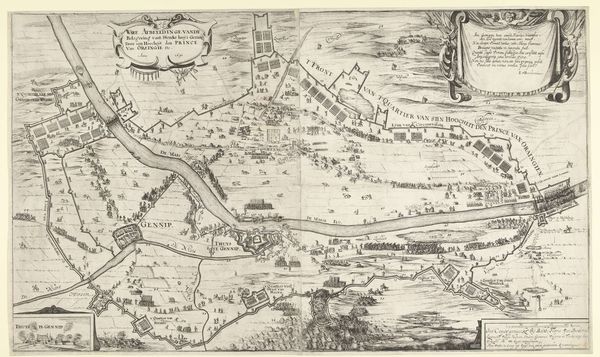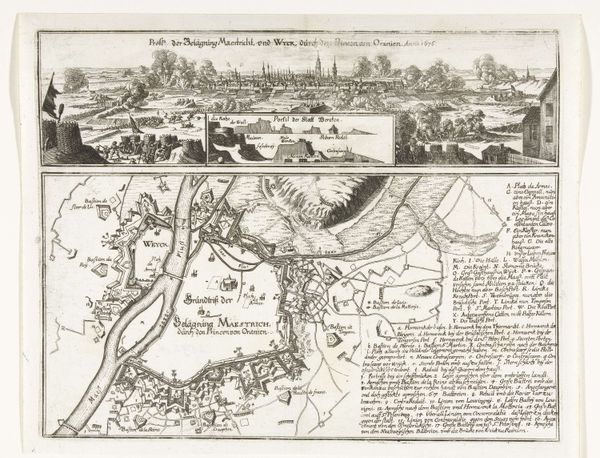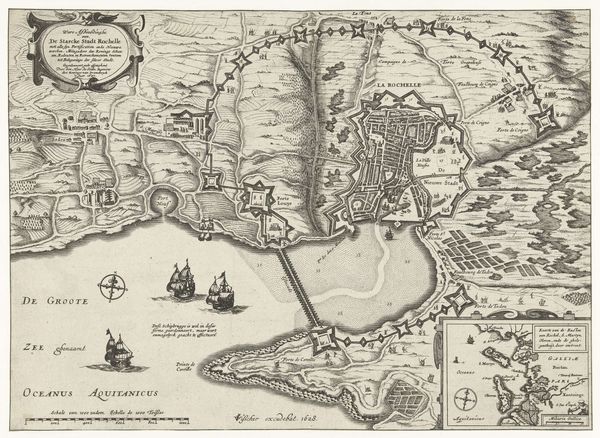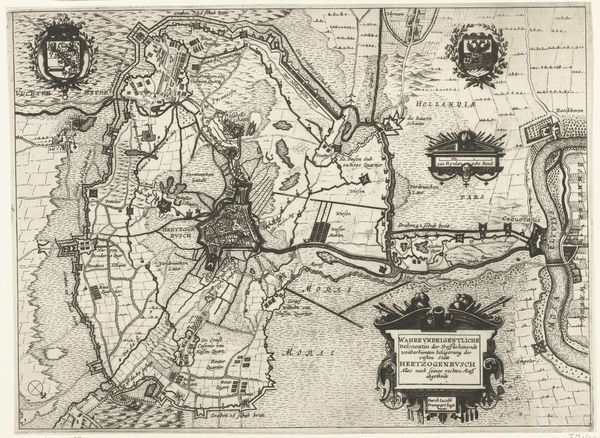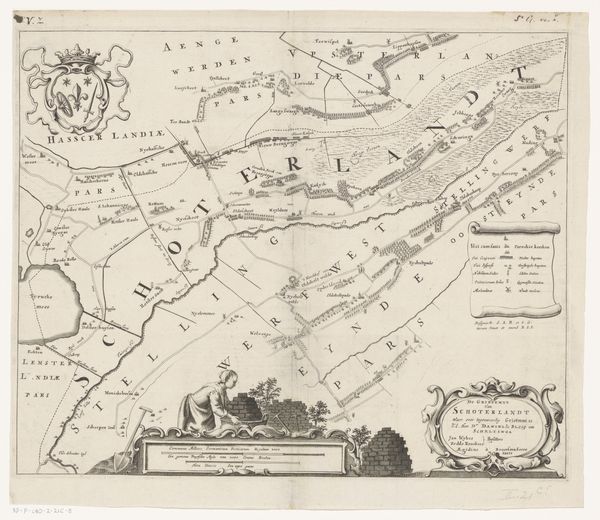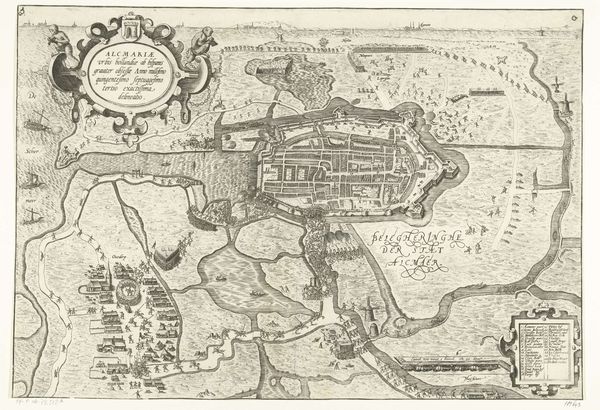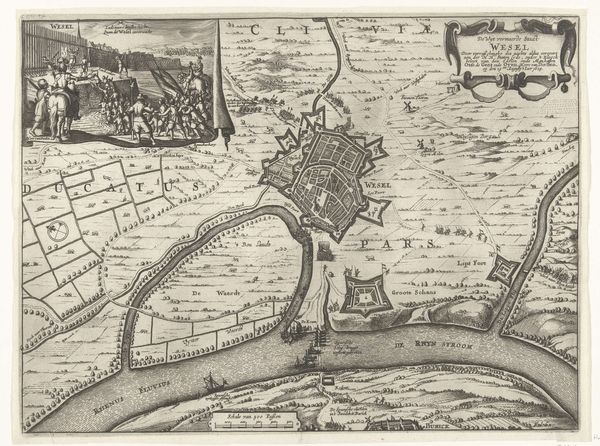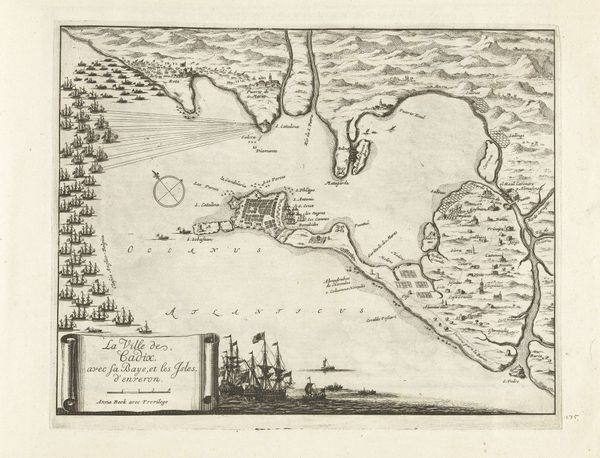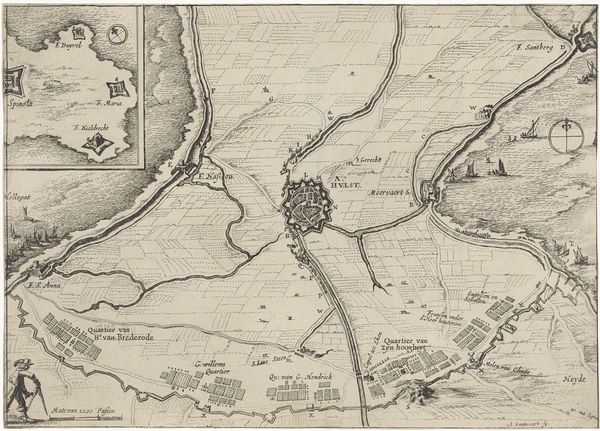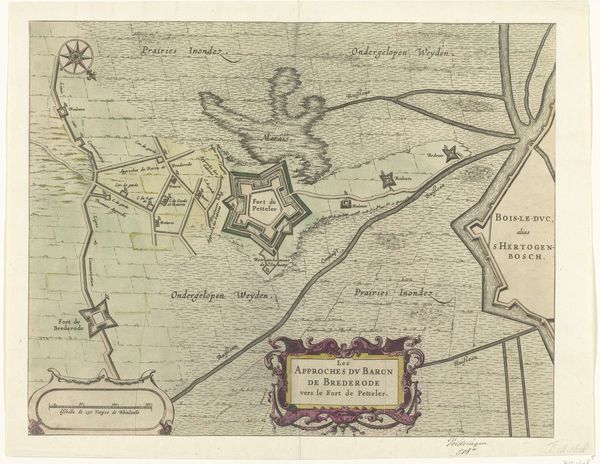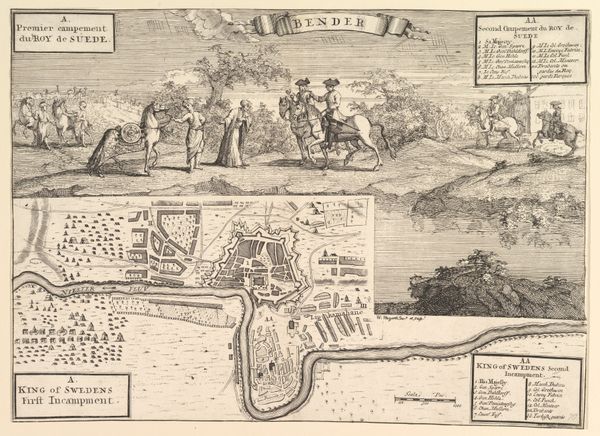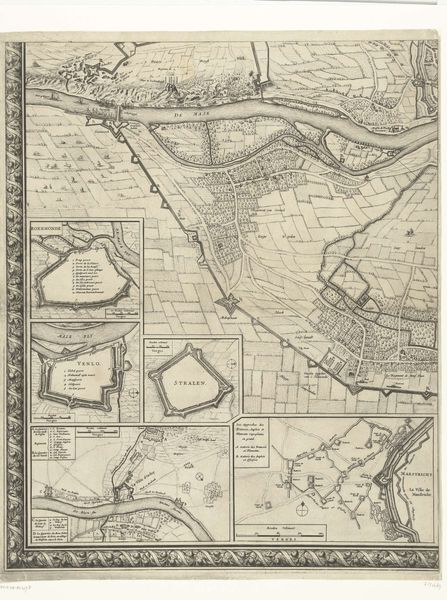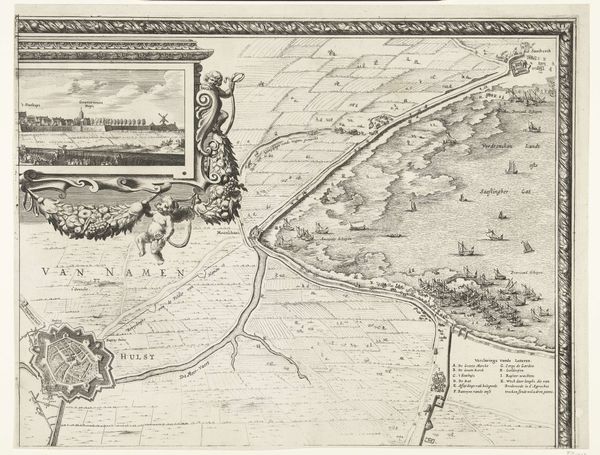
Kaart met de watermolens en het legerkwartier van de graaf van Solms tijdens het beleg van Den Bosch, 1629 1630
0:00
0:00
drawing, ink, pen
#
drawing
#
baroque
#
dutch-golden-age
#
pen illustration
#
landscape
#
ink
#
pen work
#
pen
#
cityscape
#
genre-painting
#
history-painting
Dimensions: height 295 mm, width 378 mm
Copyright: Rijks Museum: Open Domain
Editor: So, this pen and ink drawing is "Kaart met de watermolens en het legerkwartier van de graaf van Solms tijdens het beleg van Den Bosch, 1629," which translates to “Map of the watermills and the army quarter of the Count of Solms during the siege of Den Bosch, 1629.” It's from 1630. What strikes me is how incredibly detailed and precise it is, almost like a technical blueprint but with artistic flair. What jumps out at you when you look at this piece? Curator: The meticulous detail points to the intersection of art, politics, and military strategy in the Dutch Golden Age. This isn't just a drawing; it's a document, a tool, shaped by the siege of Den Bosch. Consider the map's purpose. How would such a depiction have influenced public opinion, or even been used to solidify political power after the siege? Editor: That's interesting. So, it's not just about accurately representing the landscape but also about shaping perceptions of power and control? Curator: Exactly. The Count of Solms, and the Prince of Orange are essentially marketing themselves as ingenious military leaders. The elaborate depictions of watermills, for instance, weren't simply functional; they symbolized Dutch ingenuity and their capacity to engineer their environment for military advantage. Editor: So, the seemingly objective map is actually quite biased in favor of the Dutch? It reminds me a bit of propaganda art. Curator: Indeed. Think about who this image was created for, its intended audience. Was it meant to inform, to impress, or perhaps both? What does the inclusion of those novel mills indicate about the intended viewer and message? Editor: It does make you wonder about the politics behind what gets emphasized, and how. It gives a totally new layer of meaning to cartography! Curator: Precisely. Art is so often a carefully constructed argument. Analyzing art within its historical context illuminates these hidden meanings, unveiling the intricate relationship between art, power, and society. Editor: This makes me see how studying art through the lens of history can really reveal hidden narratives within the art itself. I definitely learned a lot.
Comments
No comments
Be the first to comment and join the conversation on the ultimate creative platform.
